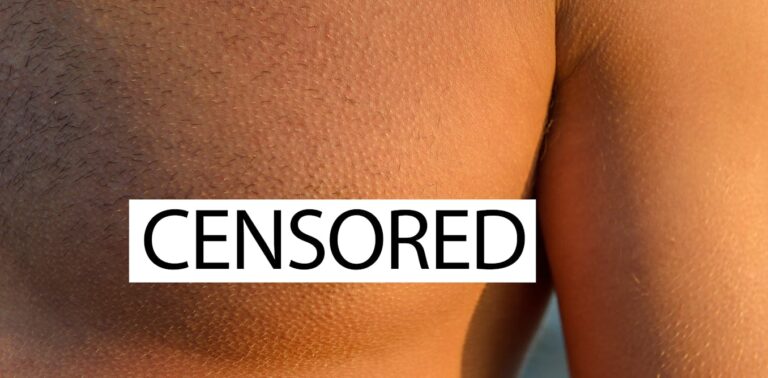What is the difference between male nipples and female nipples? What about men's pubic hair and women's pubic hair?
Well, the difference seems to be that, at least on social media, a woman's nipples and pubic hair are considered pornographic and subject to censorship, regardless of the context. Even if it's a social media post about a health issue like periods or breast cancer.
In recent years, there have been numerous reports of women's posts being censored on issues ranging from sexual health to breastfeeding and C-sections.
This is sad, but not surprising. Regardless of the situation, women's bodies are often perceived as sexualized.
Breasts campaign classified as pornographic
There is something particularly shocking about treating breast cancer awareness campaigns as pornography. Think about how a woman views her breasts at that moment. She worries that she has a disease that threatens her life. She is worried about her own health.
Labeling her image as pornographic invalidates a woman's own view of her body and replaces it with an outsider's perspective. She treats her body as an object for the viewer's sexual pleasure. Feminists call this sexual objectification.
In the case of breast cancer awareness campaigns, the conflict between women's perspectives on their bodies and pornography classification is striking. This makes it easy to see what's going wrong.
In some cases, objectification can be even more difficult to recognize.
For example, consider improving attitudes towards breastfeeding in public.
In a 2015 Start for Life poll, 72% of people said they supported breastfeeding in public.
Despite this, some people still view breastfeeding as sexual, and a 2022 study found that this perception deters some mothers from breastfeeding in public. Shown. Again, this involves prioritizing how viewers view women's bodies over the women's own attitudes and goals.
But as social media censorship shows, there is still a huge stigma around women's bodies, and it's harmful.
Researchers have investigated the effects of objectification on women's mental health. Research shows that women begin to see their bodies primarily as objects for others to exploit, and see themselves as failures if they don't conform to what is currently considered the “ideal” body type. We know that it is possible. Common effects include shame, anxiety, depression, eating disorders, and decreased productivity.
“Vagina” and “vulva” are dirty words
This view that women's bodies are sexual regardless of context is so dominant that algorithms don't see any other reason to talk about or show women's bodies. This algorithm does not recognize that content about women's bodies may be targeted at women. Therefore, women lose the opportunity to talk about and learn about their bodies.
In 2023, a campaign for vintage brand Bodyform was muted on social media due to its “sexual content”.
The campaign did not feature nudity, but did include correct anatomical terms for female body parts, such as “vagina” and “vulva.” In response to the shadowban, the brand continued to highlight a list of 40 words related to women's health that are regularly censored on social media. The list includes “clitoris,'' “vaginal discharge,'' “menopause,'' “miscarriage,'' and “polycystic ovary syndrome.''
In 2022, the Intimacy Justice Center investigated 60 women's health companies and found that in the past three years, all ads were rejected on both Meta and Instagram, and nearly half of those companies during that period It turns out that his account has been suspended. However, in some instances, advertising policies only penalized content related to the sexual health of women and non-binary people, while sexual health brands for men were approved.
Philosopher Kate Mann says that even if many women resist the shame they feel about their bodies, they often unintentionally perpetuate the idea that women's bodies exist for the benefit of others. I am claiming.
Body positivity is the idea that you should see your body as beautiful no matter what shape it is. Body neutrality suggests that we should aim to feel neutral about the way our bodies look. Manne suggests instead the reflexivity of the body. My body is for me and my perspective on it is the only thing that matters.
It may seem obvious that my body is meant for me. But women grow up being taught in so many subtle ways that their bodies are the primary object for others. Against this background, the reflexivity of the body is a radical idea.


